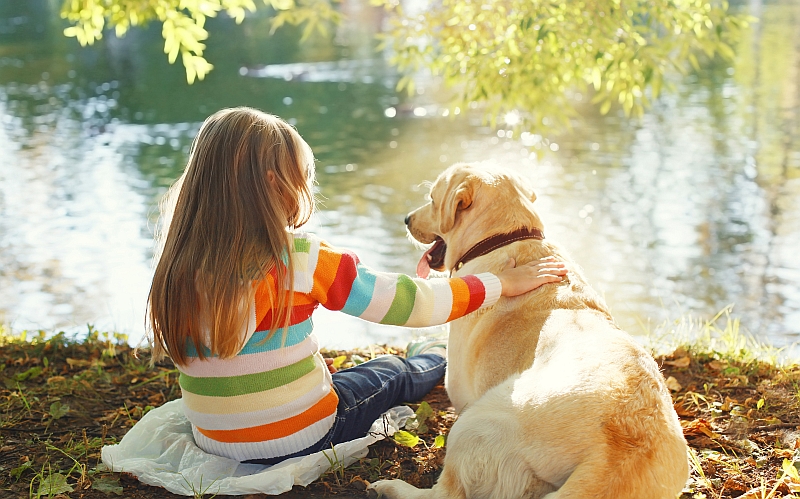“Sharing is caring” has an almost nauseatingly familiar ring to it. Children are told from an early age all about their responsibility to share, and think about another person’s needs. It is one thing to be told to do something, and quite another to have someone bring those qualities out in a natural way. Scientific studies have shown that dogs improve human interactions, quality of life, and happiness. They also are natural teachers that can instill valuable life-lessons to the young children who care for them.
3 Reasons Children Learn to Share Around Dogs
Dogs need provision and routines. This often has a negative connotation. But it is the neediness of dogs that actually helps children get outside their own self-awareness and their own desires, in favor of what the dog might need. A child might want to keep chasing their fur baby around the yard, but if it is the pup’s dinner time, they must accept that playtime is on pause. Dogs need food put in their bowl every day, and they need a refill of fresh water. This will help a child realize when he is hungry, perhaps the dog must be too, and will need consistent meals every day. Even a gesture as small as scooping food into a puppy bowl will help teach a child to share with others, and provide for more than just himself.
Dogs need playtime and exercise. That video game might be fun, or the couch irresistibly comfy, but a dog needs a walk whether we like it or not. Having a dog will teach a child to share his “personal time” and free time with his dog. He will learn to make adjustments to his own plans, in order to prioritize the needs of the pet. Plus, getting to spend an hour walking in the sunshine brings nothing but benefits to a child’s life.
Dogs need their space. Sometimes, even an energetic dog will communicate that he has had enough. Racing around chasing the child, playing fetch, or getting a prolonged grooming session from the hands of little amateurs, is enough to send a dog over to his bed for a snooze. If your child follows for more games, the dog teaches the child to respect his boundaries by not engaging. This lesson is further clarified when the dog has to take extreme measures to let the child know they aren’t kidding around. This happens particularly often if a dog is interrupted while eating, or if a child is petting to forcefully while the pup is trying to nap. A growl, warning snap in their direction will let the kid no to back off and give the dog his space. Learning to respect the distance and needs of others is an important rule for growing children.

